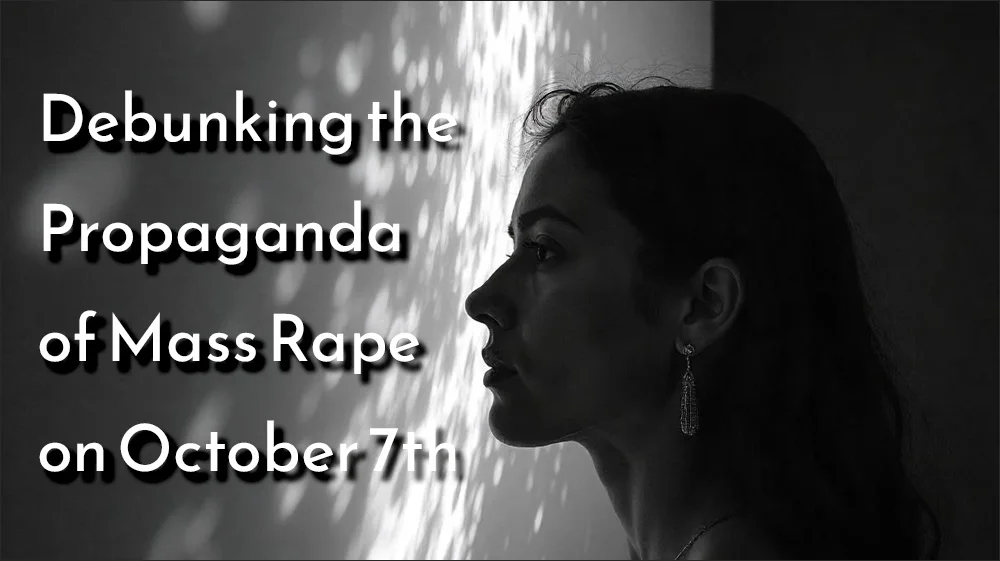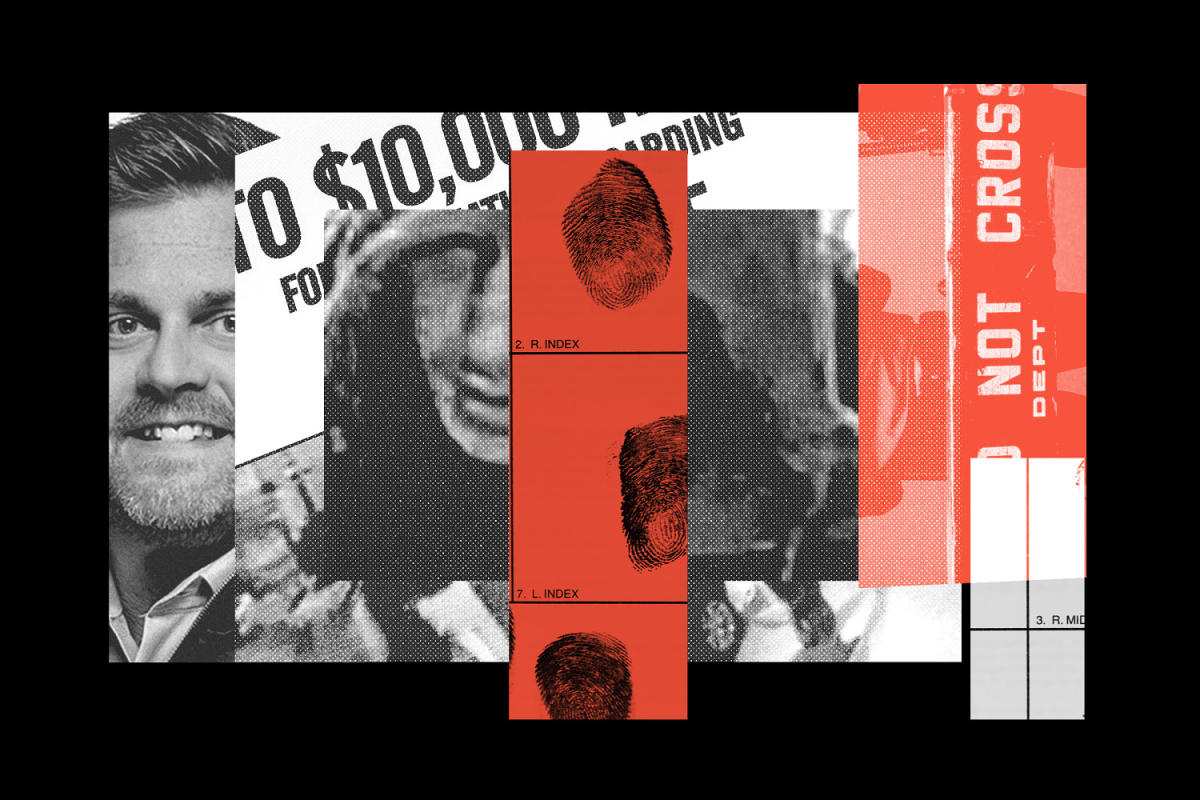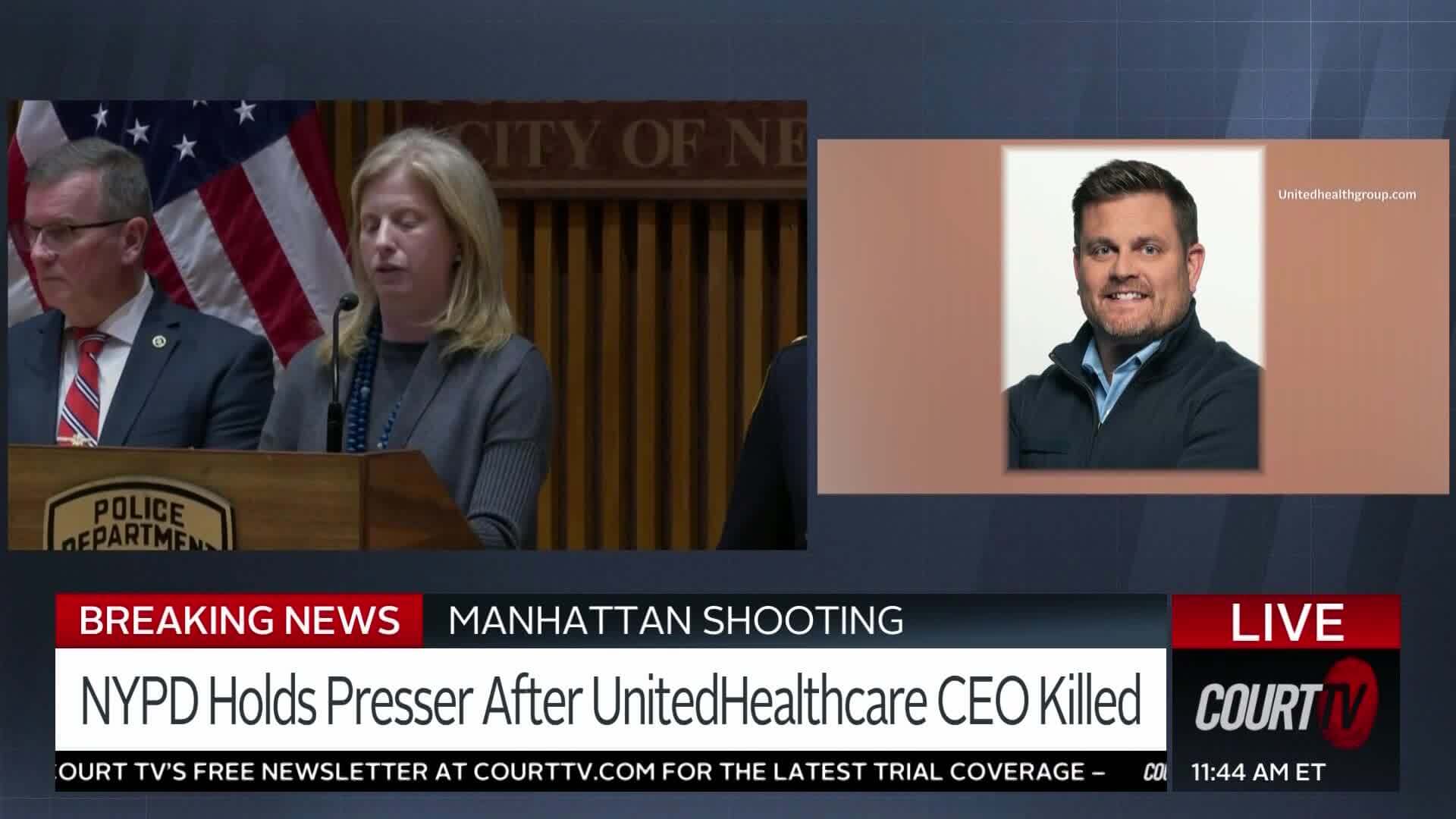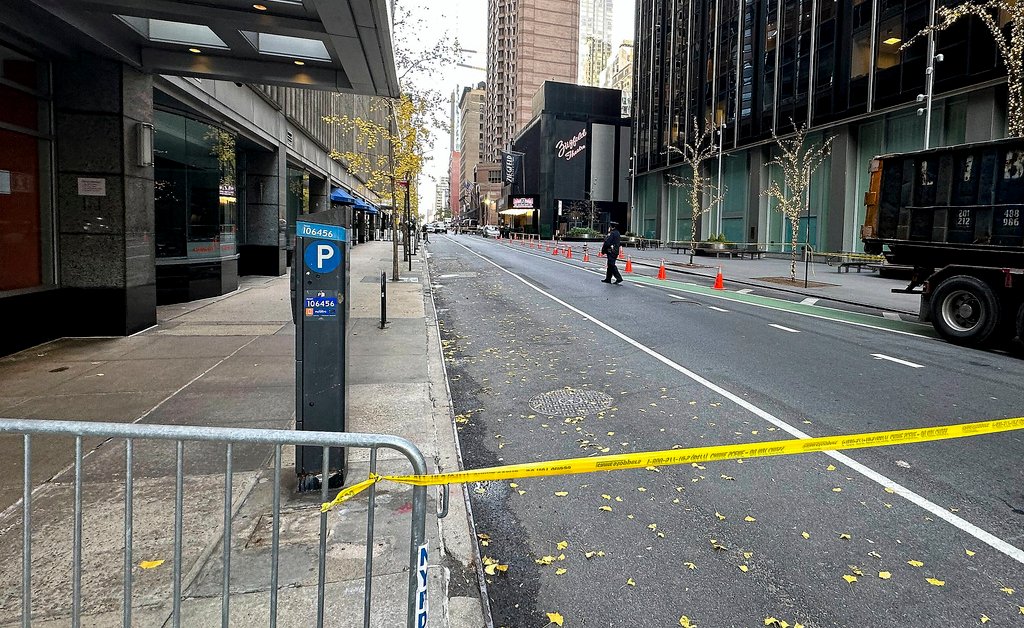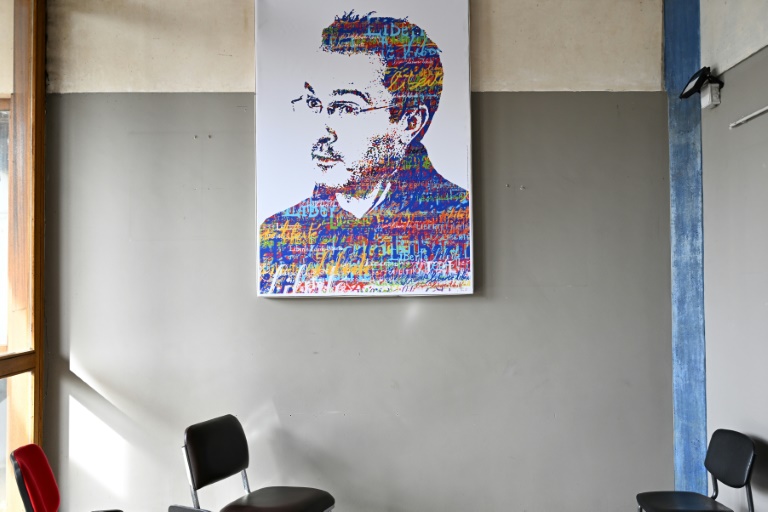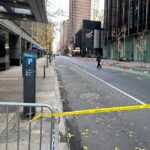The Associated Press (AP) recently examined two debunked accounts of sexual violence allegedly committed by Hamas militants during the October 7 attack in southern Israel. This examination has shed light on how information can become distorted in the chaos of conflict.
Key Points
- Debunked Accounts: Two specific accounts from ZAKA volunteers, Chaim Otmazgin and Yossi Landau, were found to be inaccurate. Yossi Landau’s account of a pregnant woman with her fetus attached was not corroborated by his colleague Otmazgin. 1 2 3 4.
- Misinterpretation: Otmazgin misinterpreted a scene where a teenage girl’s body was found with her pants pulled down, initially assuming sexual assault. It was later revealed that soldiers had moved the body to check for booby traps 12.
- Spread of Misinformation: These accounts spread rapidly through international media, bypassing ZAKA’s usual protocols 1.
- UN Findings: A UN fact-finding team reported “reasonable grounds” to believe some attackers committed sexual violence, including rape and gang rape. However, they noted the lack of forensic evidence and survivor testimony made it impossible to determine the scope 12.
- Hamas Denial: Hamas has denied its forces were involved in sexual violence 1.
Implications
- Political Impact: The debunked accounts have fueled a global dispute over the Israel-Hamas war 2.
- Media Responsibility: The incident highlights the importance of verifying information before publication, especially in conflict situations 4.
- Ongoing Investigation: While these specific accounts were debunked, investigations into sexual violence during the October 7 attack continue 1.
Reactions
- Gaza Media Office: Welcomed the AP report, stating it confirmed fabrications in Israeli propaganda 3.
- Critics: Some have used the debunked accounts to question Israel’s broader claims about the events of October 7 4.
It’s important to note that while these specific accounts were found to be inaccurate, the UN and other organizations have presented evidence suggesting that some sexual assaults did occur during the October 7 attack, though the exact extent remains unclear 12.
Takeaways from AP examination of how 2 debunked accounts of sexual violence on Oct. 7 originated
By TIA GOLDENBERG and JULIA FRANKEL
Updated 3:08 AM EDT, May 22, 2024
JERUSALEM (AP) — The United Nations and other organizations have presented credible evidence that Hamas militants committed sexual assault during their Oct. 7 rampage in southern Israel. Though the number of assaults is unclear, photo and video from the attack’s aftermath have shown bodies with legs splayed, clothes torn and blood near their genitals.
Other accounts from that day, however, proved to be untrue. They include two debunked testimonies from volunteers with the Israeli search and rescue organization ZAKA, whose stories helped fuel a global clash over whether sexual violence occurred during the attack and on what scale.
Some allege the accounts of sexual assault were purposely concocted. ZAKA officials and others dispute that. Regardless, AP’s examination of ZAKA’s handling of the now debunked stories shows how information can be clouded and distorted in the chaos of the conflict.
The accounts have encouraged skepticism and set off a highly charged debate about the scope of what occurred on Oct. 7, one still playing out on social media and in college campus protests.
Here are key takeaways from the AP’s look at how these stories originated:
VOLUNTEERS’ INTERPRETATIONS WERE FLAWED
One account that turned out to be unfounded came from Chaim Otmazgin, a ZAKA volunteer who collected bodies after the attack.
After tending to dozens of shot, burned, or mutilated bodies in Kibbutz Be’eri, one of the hardest hit communities, Otmazgin reached the home that would put him at the center of a global clash. He found the body of a teenage girl separated from two of her relatives. Her pants, he said, were pulled down. He assumed that meant she had been sexually assaulted.
Otmazgin says he told journalists and lawmakers details of what he’d seen and asked if they might have some other interpretation. Today, he maintains that he never said outright that the girl whose body he saw had been sexually assaulted. But his telling strongly suggested that was the case.
Nearly three months later, ZAKA found out Otmazgin’s interpretation was mistaken. After cross-checking with military contacts, ZAKA learned that a group of soldiers had dragged the girl’s body across the room to make sure it wasn’t booby-trapped. As they did that, her pants came down.
The other debunked account originated from Otmazgin’s colleague, Yossi Landau, also a longtime volunteer working in Be’eri. In the days and weeks that followed the attack, Landau told global media what he thought he saw: a pregnant woman lying on the floor, her fetus still attached to the umbilical cord wrenched from her body.
But Otmazgin, who was overseeing the other ZAKA workers when he said Landau frantically called him and others into the home, did not see what Landau described. Instead, he saw the body of a heavy-set woman and an unidentifiable hunk attached to an electric cable. Everything was charred.
Otmazgin said he told Landau this wasn’t a pregnant woman. Still, Landau believed his version, going on to tell the story to journalists who circulated the account internationally.
CHAOS AFTER THE ATTACK
Israel was caught off guard by the ferocity of the Oct. 7 assault, the deadliest in the nation’s history. About 1,200 people were killed and 250 were taken hostage. It took days for the military to clear the area of militants.
There were hundreds of bodies scattered across southern Israel, bearing various signs of abuse: burns, bullet holes, signs of mutilation, marks indicating bodies were bound. Confusion reigned over who was dead and who was taken captive.
Standard protocols for dealing with attacks, which Israel encountered frequently on a far smaller scale in the early 2000s, collapsed. The military was focused on battling back militants still hiding out in southern Israel. A ZAKA spokesperson said police forensics teams were focused on the southern cities of Sderot and Ofakim. Otmazgin said forensics workers were in the kibbutzim, but spread thin.
The gargantuan task of gathering the dead fell to ZAKA, a private civilian body made up of 3,000 mostly Orthodox Jewish volunteer workers. The organization focuses on giving each victim a proper Jewish burial. It had never witnessed anything like the carnage on Oct. 7. ZAKA’s main experience with victim identification before then was limited to distinguishing militant attackers from their victims, not determining who was a victim of sexual assault.
That means bodies that might have shown signs of sexual assault could have eluded examination. Instead, they were loaded into body bags, sent to a facility to be identified and dispatched for quick burial.
EASY ACCESS TO THE VOLUNTEERS HELPED SPREAD THE STORIES
Almost immediately after Oct. 7, Israel began allowing groups of journalists to visit the ravaged kibbutzim. On the trips, journalists found ZAKA volunteers to be among the most accessible and willing to talk.
The group’s usual media protocols were bypassed, and volunteers who typically would be vetted by ZAKA’s spokesperson before being interviewed spoke to journalists directly, drawing conclusions about what they saw, even though the group acknowledges that its volunteers are not forensics workers.
After untrue accounts of sexual assault spread in the international media, the process of debunking them appeared, at times, to take center stage in the global dispute over the facts of Oct. 7.
Some of Israel’s critics seized on the debunked ZAKA accounts and other untrue ones as proof that the Israeli government distorted the facts to justify the war — one in which more than 35,000 Palestinians have been killed, many of them women and children, according to Gaza health officials.
ACCOUNTS WERE FALSE BUT EVIDENCE OF SEXUAL ASSAULT MOUNTS
The loud debate belies a growing body of evidence supporting the claim that sexual assault took place that day, even as its scope remains difficult to ascertain.
A U.N. fact-finding team found “reasonable grounds” to believe that some of those who stormed southern Israel on Oct. 7 had committed sexual violence, including rape and gang rape. But the U.N. investigators also said that in the absence of forensic evidence and survivor testimony, it would be impossible to determine the scope of such violence. Hamas has denied its forces committed sexual violence.
The investigators described the accounts that originated with Otmazgin and Landau to be “unfounded.”
The U.N. report shines a light on the issues that have contributed to the skepticism over sexual violence. It said there was “limited crime scene processing” and some evidence of sexual assault may have been lost due to “the interventions of some inadequately trained volunteer first responders.” It also said global scrutiny of the accounts emerging from Oct. 7 may have deterred survivors from coming forward.
May 22, 2024 2:32 PM EDT
JERUSALEM (AP) — Chaim Otmazgin had tended to dozens of shot, burned or mutilated bodies before he reached the home that would put him at the center of a global clash.
Working in a kibbutz that was ravaged by Hamas’ Oct. 7 attack, Otmazgin — a volunteer commander with ZAKA, an Israeli search and rescue organization — saw the body of a teenager, shot dead and separated from her family in a different room. Her pants had been pulled down below her waist. He thought that was evidence of sexual violence.
He alerted journalists to what he’d seen. He tearfully recounted the details in a nationally televised appearance in the Israeli Parliament. In the frantic hours, days and weeks that followed the Hamas attack, his testimony ricocheted across the world.
But it turns out that what Otmazgin thought had occurred in the home at the kibbutz hadn’t happened.
EXPLAINER: What are the implications of Spain, Ireland and Norway recognizing a Palestinian state?
Beyond the numerous and well-documented atrocities committed by Hamas militants on Oct. 7, some accounts from that day, like Otmazgin’s, proved untrue.
“It’s not that I invented a story,” Otmazgin told The Associated Press in an interview, detailing the origins of his initial explosive claim — one of two by ZAKA volunteers about sexual violence that turned out to be unfounded.
“I couldn’t think of any other option” other than the teen having been sexually assaulted, he said. “At the end, it turned out to be different, so I corrected myself.”
But it was too late.
The United Nations and other organizations have presented credible evidence that Hamas militants committed sexual assault during their rampage. The prosecutor for the International Criminal Court, Karim Khan, said Monday he had reason to believe that three key Hamas leaders bore responsibility for “rape and other acts of sexual violence as crimes against humanity.”
Though the number of assaults is unclear, photo and video from the attack’s aftermath have shown bodies with legs splayed, clothes torn and blood near their genitals.
However, debunked accounts like Otmazgin’s have encouraged skepticism and fueled a highly charged debate about the scope of what occurred on Oct. 7 — one that is still playing out on social media and in college campus protests.
READ MORE: Pro-Palestinian campus protests are evolving. Here’s what to watch
Some allege the accounts of sexual assault were purposely concocted. ZAKA officials and others dispute that. Regardless, AP’s examination of ZAKA’s handling of the now debunked stories shows how information can be clouded and distorted in the chaos of the conflict.
As some of the first people on the scene, ZAKA volunteers offered testimony of what they saw that day. Those words have helped journalists, Israeli lawmakers and U.N. investigators paint a picture of what occurred during Hamas’ attack. (ZAKA, a volunteer-based group, does not do forensic work. The organization has been a fixture at Israeli disaster sites and scenes of attacks since it was founded in 1995. Its specific job is to collect bodies in keeping with Jewish law.)
Still, it took ZAKA months to acknowledge the accounts were wrong, allowing them to proliferate. And the fallout from the debunked accounts shows how the topic of sexual violence has been used to further political agendas.
Israel points to sexual violence on Oct. 7 to highlight what it says is Hamas’ savagery and to justify its wartime goal of neutralizing any repeated threat coming from Gaza. It has accused the international community of ignoring or playing down evidence of sexual violence claims, alleging anti-Israel bias. It says any untrue stories were an anomaly in the face of the many documented atrocities.
In turn, some of Israel’s critics have seized on the ZAKA accounts, along with others shown to be untrue, to allege that the Israeli government has distorted the facts to prosecute a war — one in which more than 35,000 Palestinians have been killed, many of them women and children, according to Gaza health officials.
A U.N. fact-finding team found “reasonable grounds” to believe that some of those who stormed southern Israel on Oct. 7 had committed sexual violence, including rape and gang rape. But the U.N. investigators also said that in the absence of forensic evidence and survivor testimony, it would be impossible to determine the scope of such violence. Hamas has denied its forces committed sexual violence.
Body bags and rocket fire
Israel was caught off guard by the ferocity of the Oct. 7 assault, the deadliest in the nation’s history. About 1,200 people were killed and 250 taken hostage. It took days for the military to clear the area of militants.
There were hundreds of bodies scattered across southern Israel, bearing various signs of abuse: burns, bullet holes, signs of mutilation, marks indicating bodies were bound. ZAKA volunteers weren’t used to dealing with so many bodies.
“You get dizzy at some point,” said Moti Bukjin, ZAKA’s spokesperson. “Some of the bodies are burned. Some are mutilated. Some of the bodies are decapitated. Every house has a story.”
Standard protocols for dealing with attacks, which Israel encountered frequently on a far smaller scale in the early 2000s, collapsed. There was confusion over who was dead and who was taken captive, especially in the hard-hit communal farming villages and in the aftermath of the outdoor Nova music festival.
Authorities were concerned that remaining militants might snatch more bodies. ZAKA says it was instructed to gather the dead as swiftly as possible and send them for identification and quick burial, according to Jewish custom. ZAKA said it sent some 800 volunteers to southern Israel, arriving at the music festival late on Oct. 7 and entering the kibbutzim two days later, according to Otmazgin.
READ MORE: Palestinians mark 76 years of dispossession as yet another catastrophe unfolds in Gaza
For the first three days, many hardly slept at all. Accompanied by military escorts, volunteers went house to house, wrapping the bodies in white plastic bags on which they wrote the person’s gender, the house number where they were found and any other identifying details. Then they’d say the Jewish mourning prayer and load them into a truck, according to Tomer Peretz, who volunteered for the first time with ZAKA in the days following the attack.
As first responders worked, rocket fire from Gaza boomed overhead. Volunteers paused and crouched when air raid sirens blared. They used anything they could find to move bodies — even shopping carts. “We worked a minute and a half per body, from the moment we touch it to the moment it is on the truck,” said Otmazgin, commander of special units with ZAKA.
Peretz, a U.S.-based artist, said the volunteers weren’t there to do forensic work; he thought the soldiers who cleared the houses of explosives beforehand were handling that process. But the Israeli military told the AP that the army did not do any forensic work in the wake of Oct. 7.
Bukjin said police forensics teams were mostly focused on the southern cities of Sderot and Ofakim. Otmazgin said forensics workers were present in the kibbutzim but spread thin and could not follow standard — and painstaking — protocols because of the scale of the attack. He said forensics teams in the area mostly instructed ZAKA on how to help identify the bodies.
That means that bodies which might have shown signs of sexual assault could have eluded examination. Instead, they were loaded into body bags, sent to a facility to be identified and dispatched for quick burial.
“People seem to have expected that the aftermath of the attack would be like a movie, that immediately the police would come, that everything would be very sterile and very clean. People who don’t live in a war zone do not understand the horrific chaos that took place that day,” said Orit Sulitzeanu, the executive director of The Association of Rape Crisis Centers in Israel.
The group has spent months gathering evidence of sexual violence that occurred that day, sifting through many accounts emerging from the chaotic early days just after the attack. “Some of those stories that turned out not to be true were not lies,” she said. They were, she said, “mistakes.”
First account: Pants pulled down
Otmazgin said he was the origin of one of two debunked stories by ZAKA volunteers about sexual assault.
He said he entered a home in Kibbutz Be’eri, one of the hardest-hit communities, where nearly a tenth of the population of roughly 1,000 was killed, and found the body of a teenage girl separated from two of her relatives. Her pants, he said, were pulled down. He assumed that meant she had been sexually assaulted.
“They slaughtered her. They shot her in the head and her pants are pulled down to here. I put that out there. Have someone give me a different interpretation,” he said then, showing an AP reporter a photo he took of the scene, which he had altered by pulling up the teenager’s pants.
Today, he maintains that he never said outright that the girl whose body he saw had been sexually assaulted. But his telling strongly suggested that was the case. Otmazgin says he told journalists and lawmakers details of what he’d seen and asked if they might have some other interpretation.
READ MORE: Israel grapples with fallout from ICC request for warrants as key allies support the move
Nearly three months later, ZAKA found out his interpretation was wrong. After cross-checking with military contacts, ZAKA found that a group of soldiers had dragged the girl’s body across the room to make sure it wasn’t booby-trapped. During the procedure, her pants had come down.
Otmazgin said it took time to learn the truth because the soldiers who moved the body had been deployed to Gaza for weeks and were not reachable. He said he recognized that such accounts can cause damage, but he believes he rectified it by correcting his account months later.
A military spokesperson said he had no way of knowing what had happened to every body in the assault’s immediate aftermath. He spoke on condition of anonymity in line with military regulations.
Another account with details similar to Otmazgin’s but attributed to an anonymous combat medic has also come under scrutiny after emerging in international media, including in a story by the AP. But the medic did not disclose where he saw the scene.
The military would not make the medic available for further interviews, so it was not possible to reconcile the two accounts or verify the medic’s.
Second account: Everything was charred
Yossi Landau, a longtime ZAKA volunteer, was also working in Be’eri when he entered a home that would produce the second debunked story. Landau would recount to global media what he thought he saw: a pregnant woman lying on the floor, her fetus still attached to the umbilical cord wrenched from her body.
Otmazgin was overseeing the other ZAKA workers when he said Landau frantically called him and others into the home. But Otmazgin did not see what Landau described. Instead, he saw the body of a heavy-set woman and an unidentifiable hunk attached to an electric cable. Everything was charred.
Otmazgin said he told Landau that his interpretation was wrong — this wasn’t a pregnant woman. Still, Landau believed his version, went on to tell the story to journalists and was cited in outlets around the world. Landau, along with other first responders, also told journalists he had seen beheaded children and babies. No convincing evidence had been publicized to back up that claim, and it was debunked by Haaretz and other major media outlets.
READ MORE: How did genocide become a crime and why is South Africa accusing Israel of committing it?
Bukjin said it took some time for ZAKA to understand that the story was not true, then asked Landau to stop telling it. Otmazgin also told Landau to stop telling the story, but that wasn’t until about three months after the attack when ZAKA was wrapping up its work in the field. The United Nations said Landau’s claim was unfounded.
Otmazgin said it has been difficult to rein Landau in, both because he vehemently believes in his version and because there is no way to stop journalists from engaging with him directly. Both Otmazgin and Bukjin attributed Landau’s continued belief in the false account to him having been deeply traumatized by what he saw in the aftermath of Oct. 7.
AP journalists attempted to reach Landau multiple times. While he answered initial inquiries, he was ultimately unreachable.
‘We’re not forensics workers’
Almost immediately after Oct. 7, Israel began allowing groups of journalists to visit the ravaged kibbutzim. On the trips, journalists found ZAKA volunteers onsite to be some of the most accessible sources of information and some shared what they thought they saw, even though, as Bukjin notes, “we are not forensics workers.”
“They pretend to know, sometimes very naively, what happened to the bodies they are dealing with,” said Gideon Aran, a sociologist at Jerusalem’s Hebrew University who wrote a recent book on the organization.
Bukjin said that the group’s usual media protocols faltered and that volunteers, who he said typically were vetted by him before being interviewed, were speaking to journalists directly. “The information is wild, is not controlled right,” said Peretz, the first-time volunteer. He said he took photos and video of what he saw even though he was told not to and was interviewed repeatedly about what he witnessed.
WATCH: Israel meets renewed resistance from Hamas amid pressure to reduce civilian casualties
Other first responders also offered accounts — of babies beheaded, or hung from a clothesline, or killed together in a nursery, or placed in an oven – which were later debunked by Israeli reporters.
ZAKA is a private civilian body made up of 3,000 mostly Orthodox Jewish volunteer workers. Beyond its work in Israel, the group has also sent teams to international incidents, including the 2011 earthquake and tsunami in Japan and the 2002 attacks in Mombasa, Kenya. As part of its role to ensure burial according to Jewish law, its volunteers scour crime scenes for remains in order to bury each body as completely as possible.
Aran, the sociologist, said Oct. 7 was unlike anything the organization had previously witnessed. ZAKA’s main experience with victim identification before Oct. 7 was limited to distinguishing militant attackers from their victims, not determining who was a victim of sexual assault, Aran said.
Debunked accounts vs. the evidence
After untrue accounts of sexual assault filtered into international media, the process of debunking them appeared, at times, to take center stage in the global dispute over the facts of Oct. 7. On social media, accounts with hundreds of thousands of followers question the very occurrence of sexual violence.
The loud debate belies a growing body of evidence supporting the claim that sexual assault took place that day, even as its scope remains difficult to ascertain.
The U.N. team investigating sexual violence said it saw “credible circumstantial information which may be indicative of some forms of sexual violence, including genital mutilation, sexualized torture or cruel, inhuman and degrading treatment.”
That included photos and videos showing a minimum of 20 corpses with clothes that had been torn, revealing private body parts, and 10 bodies with indications of bound wrists and or tied legs. No digital materials showed sexual violence in real time, the report said.
The investigators described the accounts that originated with Otmazgin and Landau to be “unfounded.” Regarding Otmazgin’s original account, they said the “crime scene had been altered by a bomb squad and the bodies moved, explaining the separation of the body of the girl from the rest of her family.”
WATCH: The online information war over fake content linked to Israel-Hamas conflict
Otmazgin said he publicly corrected himself after discovering what had transpired, including to the U.N. investigators he met. He showed the investigators — and later an AP reporter — photos and video, including one of a deceased woman who had a blood-speckled, flesh-colored bulb in her genital area, as well as several bodies of women with blood near their genitals and another who appeared to have small sharp objects protruding from her upper thigh and above her genitals.
More evidence is emerging as time goes by. A released hostage has described facing sexual violence in captivity in an account to The New York Times, and a man at the music festival said he heard a woman screaming she was being raped.
On Monday, releasing arrest warrants for top Hamas and Israeli officials, ICC Chief Prosecutor Karim Khan said that “there are reasonable grounds to believe that hostages taken from Israel have been kept in inhumane conditions, and that some have been subject to sexual violence, including rape, while being held in captivity.”
The U.N. report shines a light on the issues that have contributed to the skepticism over sexual violence. It said there was “limited crime scene processing” and that some evidence of sexual assault may have been lost due to “the interventions of some inadequately trained volunteer first responders.” It also said global scrutiny of the accounts emerging from Oct. 7 may have deterred survivors from coming forward.
Pulling focus from the victims
In the fraught global discourse surrounding Oct. 7 and the war it sparked, sexual violence has been a particular point of tension.
Israeli Prime Minister Benjamin Netanyahu, as well as prominent figures such as former U.S. Secretary of State Hillary Clinton and top technology executive Sheryl Sandberg, have called out what they saw as global indifference toward Israeli women who were sexually assaulted in the attack.
Some critics of Israel’s war, meanwhile, have raised questions about the weight of the evidence, using debunked testimonies, including from ZAKA volunteers, to do so. The site oct7factcheck.com, which says its aim is to combat “atrocity propaganda” that could “justify military or political actions,” has repeatedly challenged investigations in mainstream media about sexual violence.
The site, which is run by a loose coalition of tech industry employees supporting Palestinian rights, says it has not yet reached a conclusion on the occurrence of gender-based violence. It has alleged that ZAKA members are “behind many of the Oct. 7 fabrications.” The site has also highlighted other debunked accounts, including about a baby found in an oven and a hostage giving birth in captivity.
Tariq Kenney-Shawa, a U.S. policy fellow at Al-Shabaka, a Palestinian think tank, said a long history of what he calls Israeli disinformation and propaganda has fueled global skepticism over the claims. The debunked ZAKA stories, he said, contributed to the sense that Israel exaggerated accounts of atrocities committed by Hamas to dehumanize Palestinians as its military continues its deadly offensive.
“Skepticism of all claims made by the Israeli military, a military that is being investigated for genocide at The Hague, are not only justified but should be encouraged,” he said. “That’s why Palestinians, and much of the international community, are asking for thorough scrutiny.”
Dahlia Scheindlin, a commentator on Israeli affairs, said those downplaying the atrocities committed by Hamas have seized on the debunked ZAKA accounts as “ammunition” to show that Israel fabricates or that Oct. 7 wasn’t so bad, rather than examining all the available evidence to build a more comprehensive picture of what happened.
At the same time, any false accounts, even if produced without malice, lead to further polarization and pulls the focus away from victims, she argues. “Every bit of misinformation, disinformation — good faith or bad faith, mistakes or lies — is extremely destructive.”
NYT pulls Hamas rape story from podcast over internal turmoil over shoddy reporting: Max Blumenthal
Rising / January 30, 2024 / 9:43 AM PST
Editor at The Grayzone Max Blumenthal weighs in on reporting that The New York Times podcast, “The Daily” tabled an episode of the podcast on Oct. 7 set to air earlier this month.
Has the Needle Shifted on Israel’s Claim That Hamas Used Mass Rape as Strategy?
Pamela Philipose 20/Jun/2024 5 min read
The charge that Hamas used mass rape as deliberate strategy, which was greatly amplified by the Western media, failed the test of evidence, even if random acts of sexual violence could certainly have been committed by Hamas operatives during the incursion.
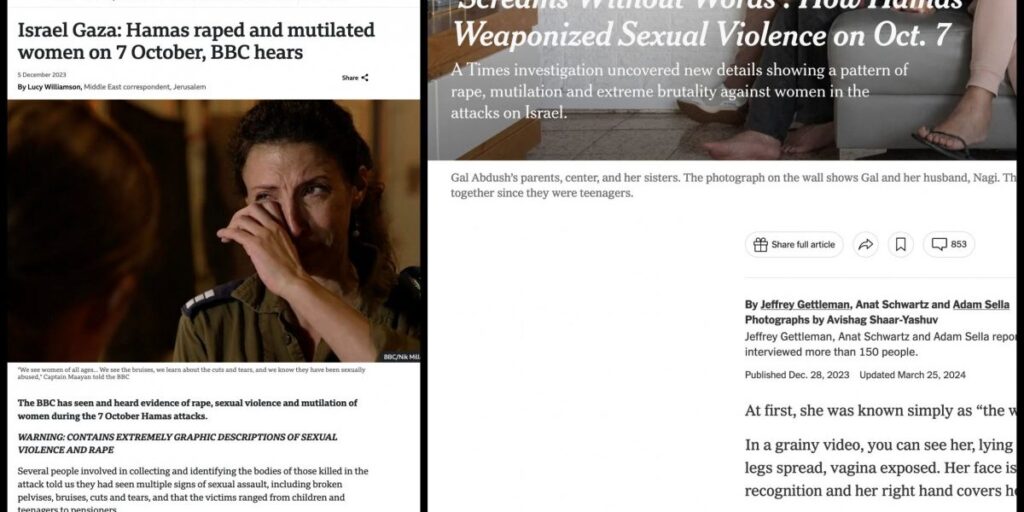
Among Israel’s most dependable allies in its propaganda war, which has been running alongside its genocidal action in Gaza, have been Western media outlets which have systematically and faithfully amplified information and opinion emanating from Tel Aviv.
Soon after the October 7, 2023 attack by Hamas, Israel’s propaganda system – one of world’s most sophisticated and technologically well-equipped – swung into action. Within a matter of days, the international media were swamped with stories of Hamas operatives having decapitated Israeli babies. The figures quoted were terrifying. One NBC headline of October 12 read: ‘Unverified reports of “40 babies beheaded” in Israel-Hamas war inflame social media’. Among the sources for this report was a live broadcast put out by a Tel Aviv-based news channel, whose reporter claimed to have got the information from Israeli soldiers who had witnessed such decapitation. Shortly thereafter, you had US President Joe Biden, no less, publicly passing this off as fact. It was left to his staff to wheel back on the claim, clarifying that they had no independent way to establish its veracity. Before long, Israeli officials themselves admitted that they could not confirm that such beheadings had taken place. A CNN reporter who had earlier put out a version of this story later tweeted, “I needed to be more careful with my words and I am sorry.”
The mass beheading of Israeli babies by Hamas came to be perceived as a carefully manufactured piece of disinformation circulated to draw similarities between the Palestinian group and ISIS. More importantly, it was to justify Israel’s vicious, genocidal assault on Gaza launched almost immediately.
As the narrative of the mass decapitation of babies faded away, another – as deeply triggering as the first – took its place and continues to roil the news space to this day: mass rape as Hamas’s sanctioned strategy during the October 7 attack. Once again, Western media played their assigned role and yet again all the sources cited in their stories were exclusively Israeli. A BBC report by its Middle East correspondent was a good example. Headlined, ‘Israel Gaza: Hamas raped and mutilated women on 7 October, BBC hears’ (December 5, 2023), it contained blood-curdling details, including one testimony from a woman who was at the Nova festival that the Israeli police privately showed journalists who recalls witnessing Hamas fighters gang rape and mutilate a woman. She goes on to detail how the men cut off parts of the victim’s body during the assault. ‘”They sliced her breast and threw it on the street,” she says. “They were playing with it.”’
What was conspicuous about this report was that its major source – the Israeli police – claimed that they had “multiple” eyewitness accounts of sexual assault but wouldn’t say how many. They also admitted they had not interviewed any surviving victims of such rapes. Such uncertain evidence however did not deter the New York Times (NYT), that prides itself on being the world’s prime repository of “all the news that is fit to print”, from repeating the mutilation story 23 days later.
The story that came to occupy pride of place in Israel’s informational onslaught post-October 7, was evocatively titled, ‘Screams Without Words: How Hamas Weaponized Sexual Violence on Oct. 7’ (December 28). Written by Jeffrey Gettleman, a Pultizer Prize winner, and two Israeli colleagues, Anat Schwartz and Adam Sella, its main argument was evident in its headline: sexual violence as part of Hamas’s strategic offensive.
The report utilised an interesting conceit. Amidst the largely faceless reportage on mass rape that had been churned out thus far, this one interwove the story of Gal Abdush, whose body was found alongside her car and had been only identified till then as “the woman in the black dress”, whom the Israeli police claimed had been raped. By revealing her identity, NYT sought to make her symbolic of “the horrors visited upon Israeli women and girls during the Oct. 7 attacks”. The story soon gained traction across the world. Heavyweights like Sheryl Sandberg, former COO of Facebook, even made a documentary on the subject titled, ‘Screams Before Silence’. The NYT story had provided more spine-tingling details of the breast-hacking incident put out in the BBC report and the source was a woman with the pseudonym ‘Sapir’ who survived the Nova festival and who was now a key witness for the Israeli police.
Among the first rebuttals to the NYT story was one from the Abdush family. They denied that Gal had been raped and even implied that they had been interviewed by the NYT on false pretences (‘Between the Hammer and the Anvil: The Story Behind the New York Times October 7 Exposé’, The Intercept). Another instance cited in the same story of two young women sexually abused in Kibbutz Be’eri also came up for denial from a Be’eri spokesperson, who maintained that the girls were shot, not sexually assaulted.
Israel has invested a great deal of effort to gather the forensic evidence required to render the ‘Sapir’ story foolproof, since it was something of a centrepiece for its thesis that brutal sexual violence was integral to the Hamas attack. However, it has so far failed to identify the victim of that unspeakable atrocity.
As the NYT story began to disintegrate despite the newspaper’s stout defence of it, questions arose about its veracity from within the organisation itself. The editors of The Daily, the NYT podcast, gave up the idea of running it as it did not measure up to its evidentiary standards.
Initially it was only Palestinian outlets, like Electronic Intifada, or alternative Leftwing news portals like The Grayzone and The Intercept, and newspapers supportive of the Palestinian cause, such as Arab News, that were prepared to call out these catastrophic journalistic failures. Yet slowly, inexorably, the tableau began to change. In early March, The Nation poured scorn on the NYT story, highlighting its many obvious shortcomings (‘The Nixonian New York Times stonewalls on a Discredited Article About Hamas and Rape’, March 1). The following month, The Washington Post reported that 50 senior professors of journalism had written a collective letter to the newspaper demanding it address the questions that have arisen from its expose.
The premise on which the NYT story, and by extension Israel’s larger ‘Hamas weaponised rape’ claim, now came under more rigorous scrutiny from the Western media. Most recently the UK-based The Times, London (‘Israel says Hamas weaponised rape. Does the evidence add up?’, June 7) carried an exhaustive re-assessment, drawing on, among other sources, the report of the UN general-secretary’s special representative on sexual violence Premila Patten. It concluded, as did the Patten report, that the information on the October 7 attack was generated by sources that could not be characterised as reliable and this had created an instant but flawed narrative.
So what can we make of this flood of supposed facts that swept over the world in the wake of October 7? Let me offer four major conclusions.
First, the charge that Hamas used mass rape as deliberate strategy, which was greatly amplified by the Western media, failed the test of evidence, even if random acts of sexual violence could certainly have been committed by Hamas operatives during the incursion. In all these months, only one woman has testified to her own sexual abuse. Hugely reprehensible as the incident she narrated was, it did not take place on October 7. It was while she was in captivity in Gaza that she was forced to commit a sexual act on her male captor.
Second, in all these months, the sexual violence perpetrated by Israel on the Palestinian population has been deliberately, systematically and unconscionably ignored, not only by the Western media but by those in countries like India where major media outlets had allowed themselves to get embedded in Israel’s military action.
Third, what the mainstream media across the world has always failed to do is to tell this story in all its complexity. Long before October 7 is the broken history of Palestine that is never recalled: a history of settler colonialism, dispossession, expulsion, massacre and apartheid. As the UN recently acknowledged, October 7 did not occur in a vacuum.
Finally, we need to note the cynical manner in which media information has been deployed by Israel in the wake of October 7 to frame itself as the victim, even as it continues to rain retributive fire on Gaza that has so far consumed over 37,000 lives.
To borrow a word from the NYT article, there was weaponisation in the wake of October 7 – but it was the weaponisation of information.
Pamela Philipose is The Wire‘s ombudsperson.
Hamas rejects UN accusations of sexual violence in 7 October attack on Israel
Palestinian group, Hamas, on Tuesday rejected accusations by a UN Special envoy for its fighters of sexually assaulting Israeli women during its 7 October cross-border attack into Israel, Anadolu Agency reports.
Pramila Patten, the UN Special Representative on Sexual Violence in Conflict, said in a report on Monday that there are “reasonable grounds to believe” sexual violence, including rape and gang rape, occurred during the Hamas attack.
Hamas dismissed the accusations by the UN envoy as “false” and “baseless”.
The report “came out after failed Israeli attempts to prove this false accusation to demonise the Palestinian Resistance and cover up … horrific human rights violations committed by Israeli Occupation forces against Palestinian women and girls,” it said in a statement.
Last month, UN experts expressed alarm over “credible allegations” of egregious human rights violations that Palestinian women and girls continue to face in the Gaza Strip and the West Bank.
Hamas said the allegations “clearly contradict with testimonies of freed Israeli hostages of good treatment by Hamas fighters while in captivity.”
“This false accusation will not succeed in erasing the ugliness and horror of the Israeli crimes in the Gaza Strip,” the Palestinian group said.
BLOG: The inhumanity of humanitarian aid
Israel has launched a deadly military offensive on the Gaza Strip since a 7 October, 2023 Hamas attack, which Tel Aviv said killed less than 1,200 people.
However, since then, it has been revealed by Haaretz that helicopters and tanks of the Israeli army had, in fact, killed many of the 1,139 soldiers and civilians claimed by Israel to have been killed by the Palestinian Resistance.
More than 30,600 Palestinians have since been killed and over 72,000 others injured amid mass destruction and shortages of necessities.
Israel has also imposed a crippling blockade on the Gaza Strip, leaving its population, particularly residents of northern Gaza, on the verge of starvation.
The Israeli war has pushed 85 per cent of Gaza’s population into internal displacement amid acute shortages of food, clean water and medicine, while 60 per cent of the enclave’s infrastructure has been damaged or destroyed, according to the UN.
Israel is accused of genocide by the International Court of Justice. An interim ruling in January ordered Tel Aviv to stop genocidal acts and take measures to guarantee that humanitarian assistance is provided to civilians in Gaza.
READ: Israel says UN trying to keep quiet on report about Hamas sexual attacks

